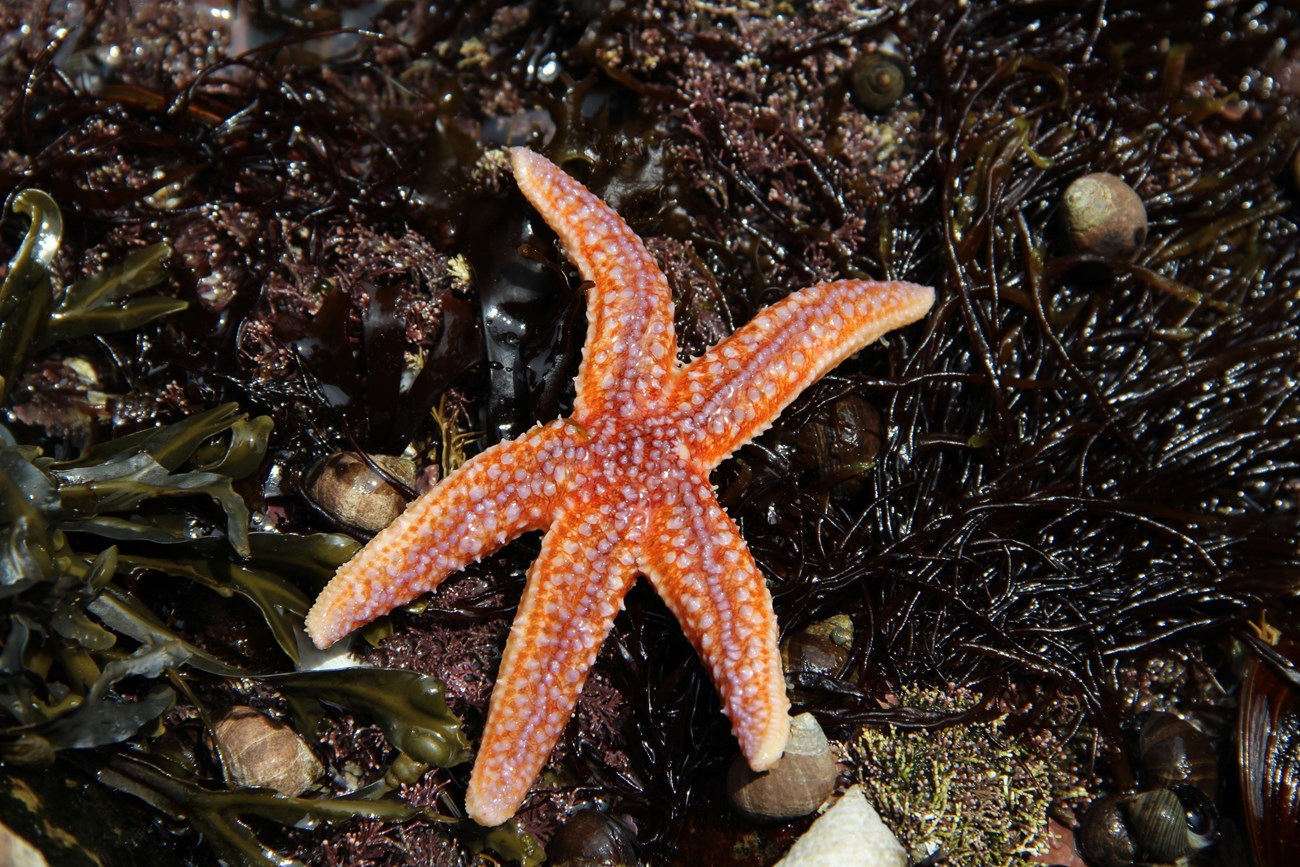Last updated: October 28, 2020
Article
Creature Feature: Sea Stars

NPS Photo/Crystal Lewis
Northern Sea Star
This animal is called a Northern Sea Star (Asterias rubens). Sea stars are echinoderms- echinoderm means “spiny skin.” Did you notice the white spines on the sea star?
How They Move:
This type of sea star has 4 rows of tube feet in an open groove (a long indent or channel) along the underside of each arm. They use their tube feet for:
-
Locomotion: They use a water-vascular system, which is like a network of canals and reservoirs. Water is pulled in through the madreporite (the pale spot on top of the sea star) and sent to the tube feet to make them move. It would take a sea star about one week to travel 1 mile.
-
Holding On: Each tube foot has a sticky, suction cup at its end that help it hold onto the rocky shore.
-
Feeding: They use their tube feet to suction onto the shells of bivalves (animals with two shells) and pry them apart.
What They Eat:
They eat bivalves (mussels, clams, oysters, scallops), barnacles, and mollusks (sea snails, sea slugs). Feeding: Sea stars have a very interesting way of eating. The mouth of a sea star is underneath its body in the center. When it catches its prey it will push its stomach out through its mouth and onto its meal. It will then digest and absorb its meal before pulling its stomach back into its body through its mouth
What Eats Them
Predators (animals that eat them) include crabs, lobsters, bottom dwelling fish, other sea stars, and seagulls. Sometimes a predator will grab onto a sea star’s arm and the sea star can detach or let go of it to get away. But don’t worry, they can regrow their arms! This is called regeneration.
How They See
They have eye spots instead of eyes. Look for the red dot located at the end of each arm. These can sense the changes in light. They can tell when it gets darker or lighter.
Where They Live
Where is this Sea Star? This video was taken with a special underwater camera in a tidepool on the Schoodic Peninsula at Acadia National Park. Schoodic Peninsula is the only part of Acadia located on the mainland. The rest of Acadia is on islands. Most of Acadia’s protected land is on Mount Desert Island. Acadia protects over 60 miles of coastline, including Sand Beach, mudflats, cobblestone shores, and mostly rocky coast. At high tide, ocean water rises up onto the coast. At low tide, ocean water lowers. The area between where the high tide reaches and the low tide is called the intertidal zone. Sea stars live in the lower intertidal; they would dry out in the sun at low tide if they were in the upper parts. They can be found on rocks and in tidepools, which are holes, crevices, and depressions in rocks that trap seawater as the tide goes out. They also live in the subtidal zone, meaning deeper in the ocean, always underwater.
